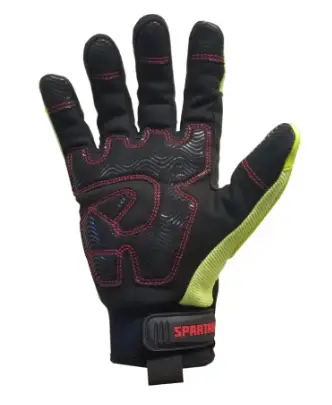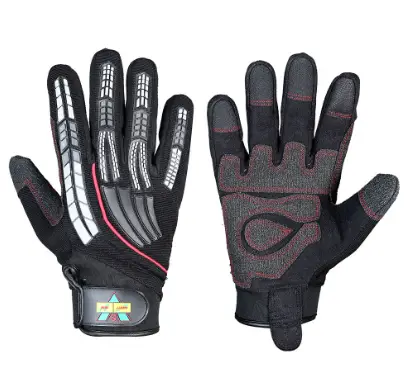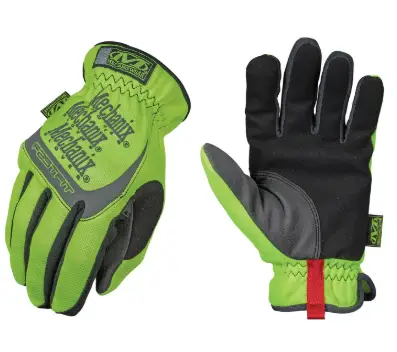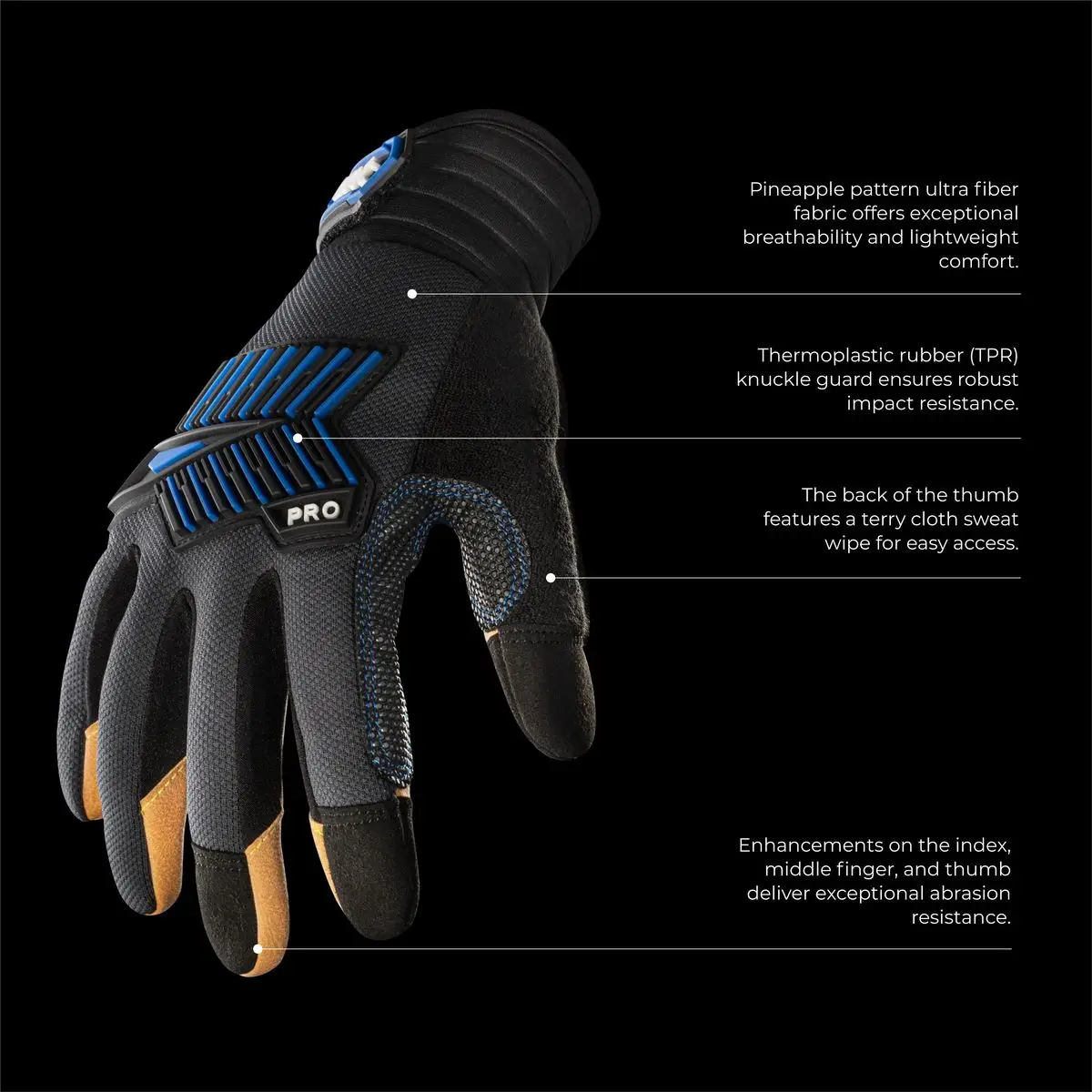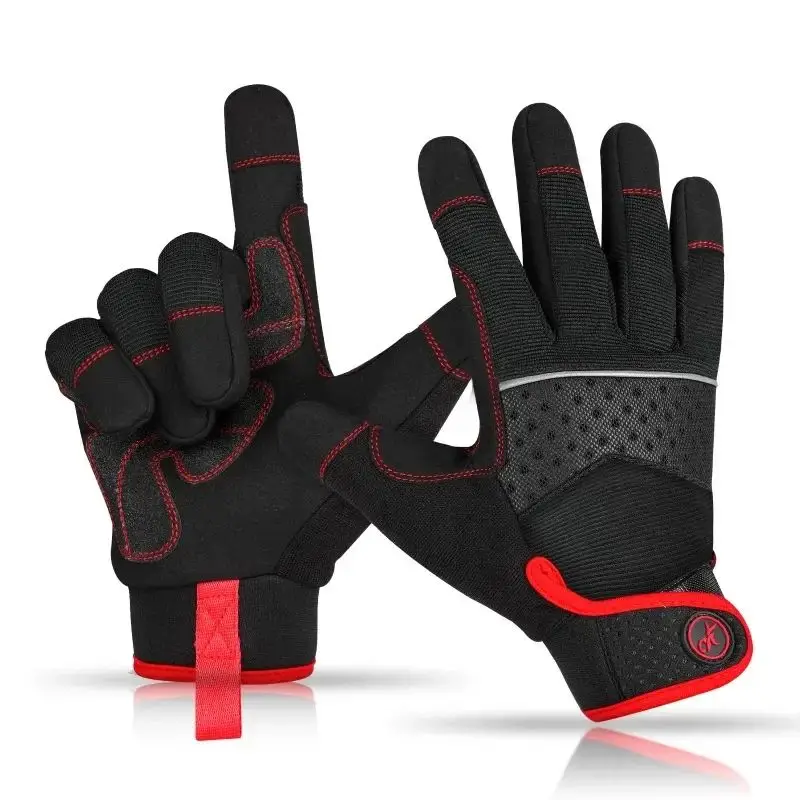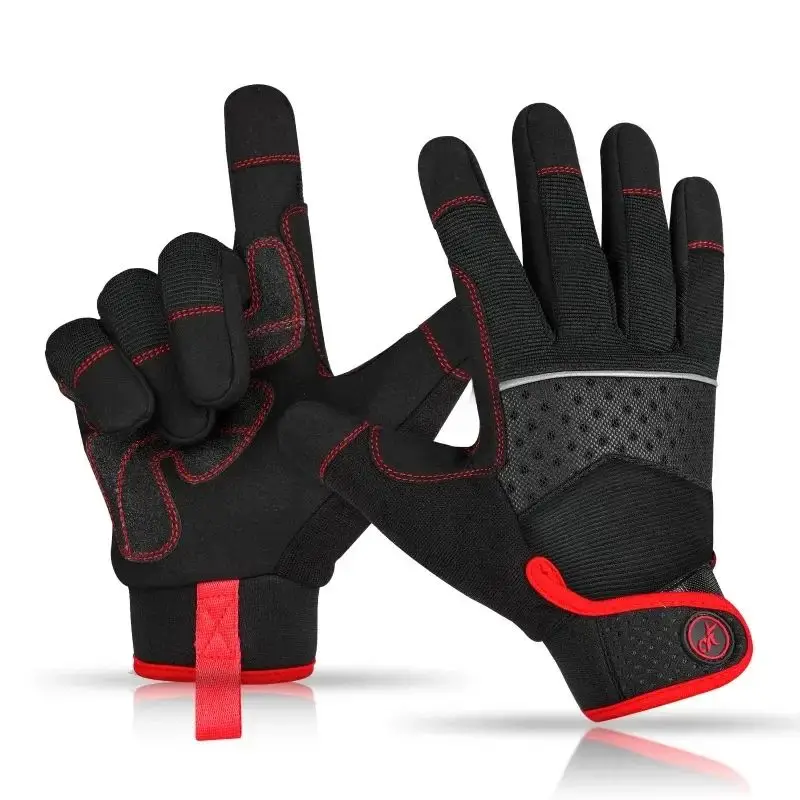
Mechanical gloves are an essential tool in various industries, offering hand protection in tasks involving heavy machinery, construction, automotive work, and more. The design of mechanical gloves has evolved significantly, focusing on safety, comfort, and durability to meet the rigorous demands of these fields. In this article, we’ll explore the key features and benefits of mechanical gloves, backed by detailed specifications and insights.
1. Material Composition
The material used in mechanical gloves plays a pivotal role in ensuring durability and comfort. Modern gloves are made from a combination of synthetic fibers that provide protection while allowing flexibility.
- Palm Materials: The palm area is typically made of high-durability materials such as nylon and polyester. These materials offer excellent resistance to wear and tear while maintaining flexibility.
- Shell Construction: The outer shell may include combinations of polyester, neoprene, and spandex, offering flexibility and a snug fit. The spandex ensures stretchability, while neoprene adds a layer of insulation and impact resistance.
For example, one of the gloves showcased in the images uses a combination of 63% polyester, 23% neoprene, 8% nylon, and 4% spandex. This ensures a balance between breathability and toughness, ideal for handling rough conditions while maintaining dexterity.
2. Protection and Performance Features
Mechanical gloves are designed to protect against a variety of workplace hazards, including cuts, abrasions, impact, and chemical exposure. Some of the standout features include:
- Thermoplastic Rubber (TPR) Knuckle Guard: This is a crucial feature found in gloves that provide impact resistance. It helps absorb shocks and protects the knuckles from heavy impact, which is particularly useful in construction, mining, and heavy machinery work.
- Oil and Water Resistance: Many gloves feature special coatings on the palm that provide resistance to oil, water, and other industrial fluids. This enhances the grip and makes the gloves easier to clean, extending their lifespan.
- Abrasion Resistance: Reinforcements on the fingers, particularly the index, middle finger, and thumb, provide extra durability. These areas are most prone to wear, so additional protection ensures the gloves last longer in harsh environments.
3. Comfort and Breathability
Working for extended periods requires gloves that are not only protective but also comfortable. Many mechanical gloves incorporate features that enhance comfort:
- Breathable Fabrics: Advanced gloves use breathable materials such as ultra-fiber fabric with pineapple patterns that allow air circulation. This prevents sweating and keeps the hands cool, especially during hot weather.
- Sweat Wipe Feature: Some gloves come with a terry cloth sweat wipe on the thumb, making it easy for workers to wipe their face or hands without removing the gloves—an excellent feature for professionals working in humid or hot conditions.
4. Fit and Flexibility
The fit of the glove is as crucial as its protective features. Ill-fitting gloves can be uncomfortable and may not offer full protection. High-quality mechanical gloves come in various sizes, from S to 2XL, ensuring a proper fit for every worker. They often include:
- Adjustable Hook and Loop Cuff: This design allows users to adjust the tightness around the wrist, ensuring that the gloves stay securely in place while offering quick removal when necessary.
- Gunn Cut Construction: This design is popular for mechanical gloves as it enhances comfort and flexibility, reducing hand fatigue during prolonged use.
5. Aesthetic and Design Elements
While functionality is key, modern gloves also emphasize aesthetics. The combination of colors, logos, and overall design helps reinforce the branding of manufacturers. For instance, the gloves shown in the images include gold rubber logo prints, enhancing the gloves’ professional appearance.
The double-stitched edges add durability and also create a sharp, polished look. Many gloves also have bright accent colors, such as green or yellow, that provide visibility in low-light conditions, improving worker safety.
6. Weight and Sizing Variations
Mechanical gloves vary in weight depending on their size and the materials used. For example, a glove size L may weigh around 76 grams, while XL and 2XL can weigh up to 85.73 grams. Lighter gloves offer more dexterity, while heavier ones provide better protection and padding.
It’s essential to choose the right size to maintain balance between protection and ease of movement. Always refer to detailed size charts for accurate glove dimensions to ensure the best fit.
7. Applications of Mechanical Gloves
Mechanical gloves are suitable for a wide range of industries, including:
- Automotive Work: Protects against sharp edges, oil, and heavy impact when handling tools.
- Construction: Offers impact and cut resistance, keeping workers’ hands safe during heavy-duty tasks.
- Industrial Maintenance: With oil and water-resistant properties, these gloves are perfect for handling equipment and machinery that involve greasy or oily components.
- Outdoor Activities: The gloves’ durable design makes them ideal for outdoor tasks such as landscaping or DIY projects.
Conclusion
Mechanical gloves are more than just a protective accessory; they are a vital part of workplace safety. With advancements in material technology, these gloves offer enhanced protection, comfort, and durability. When selecting mechanical gloves, it’s important to consider the specific requirements of the job, from impact resistance and waterproof features to breathability and flexibility.
Whether you’re working in a construction zone, automotive shop, or industrial facility, the right pair of mechanical gloves can make all the difference in ensuring safety and performance.
Social Share
